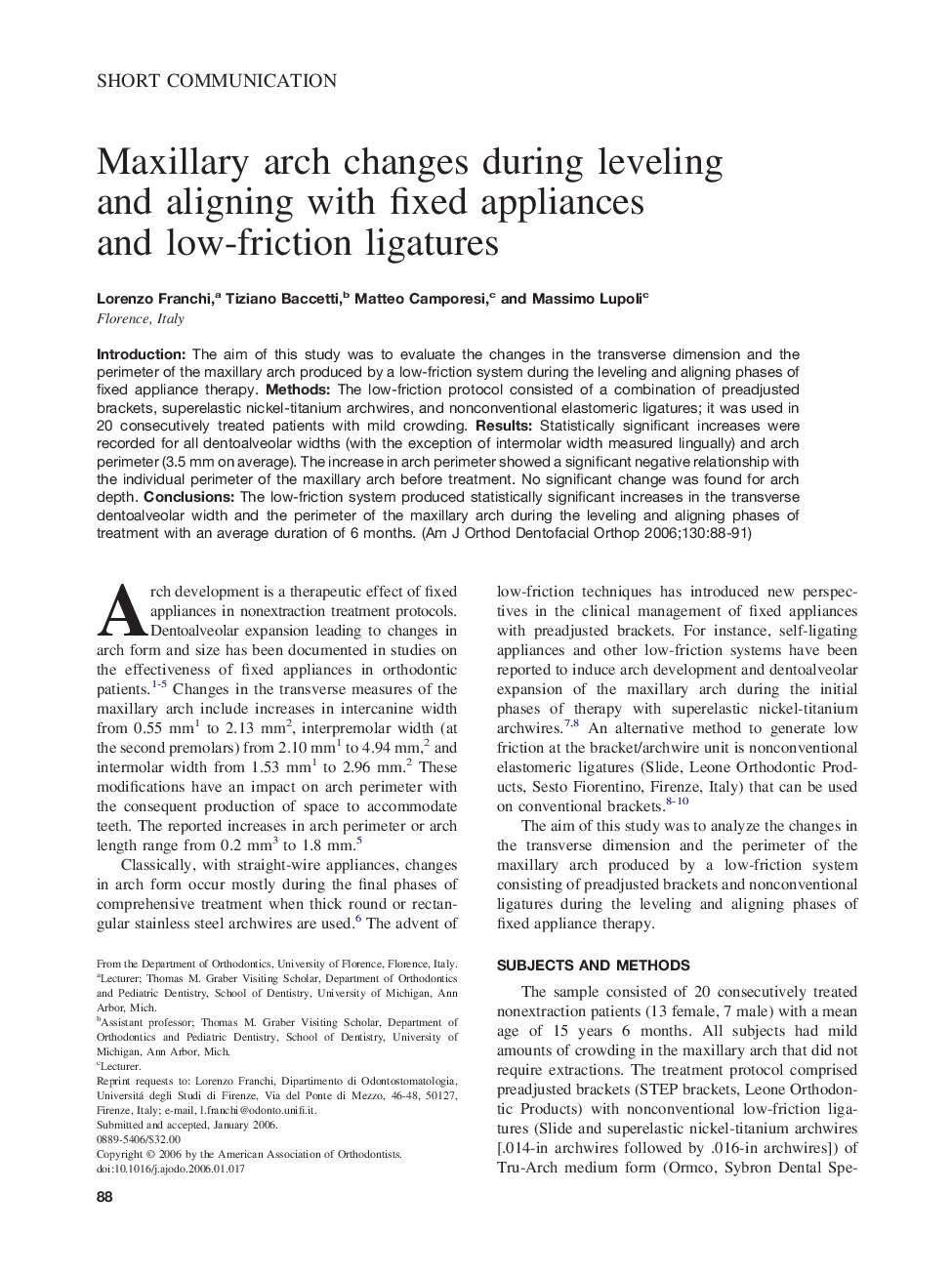| Article ID | Journal | Published Year | Pages | File Type |
|---|---|---|---|---|
| 3119010 | American Journal of Orthodontics and Dentofacial Orthopedics | 2006 | 4 Pages |
Introduction: The aim of this study was to evaluate the changes in the transverse dimension and the perimeter of the maxillary arch produced by a low-friction system during the leveling and aligning phases of fixed appliance therapy. Methods: The low-friction protocol consisted of a combination of preadjusted brackets, superelastic nickel-titanium archwires, and nonconventional elastomeric ligatures; it was used in 20 consecutively treated patients with mild crowding. Results: Statistically significant increases were recorded for all dentoalveolar widths (with the exception of intermolar width measured lingually) and arch perimeter (3.5 mm on average). The increase in arch perimeter showed a significant negative relationship with the individual perimeter of the maxillary arch before treatment. No significant change was found for arch depth. Conclusions: The low-friction system produced statistically significant increases in the transverse dentoalveolar width and the perimeter of the maxillary arch during the leveling and aligning phases of treatment with an average duration of 6 months.
